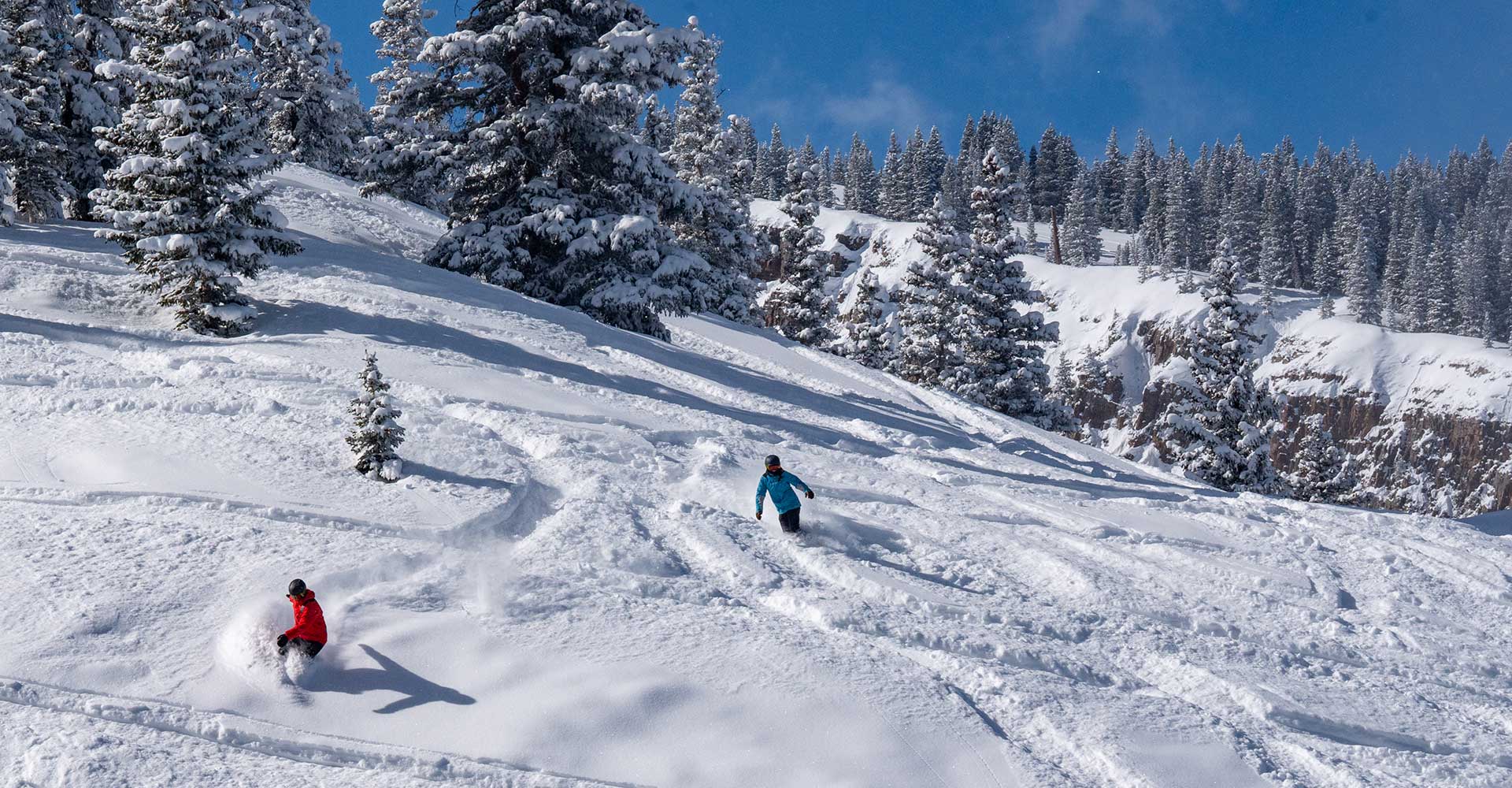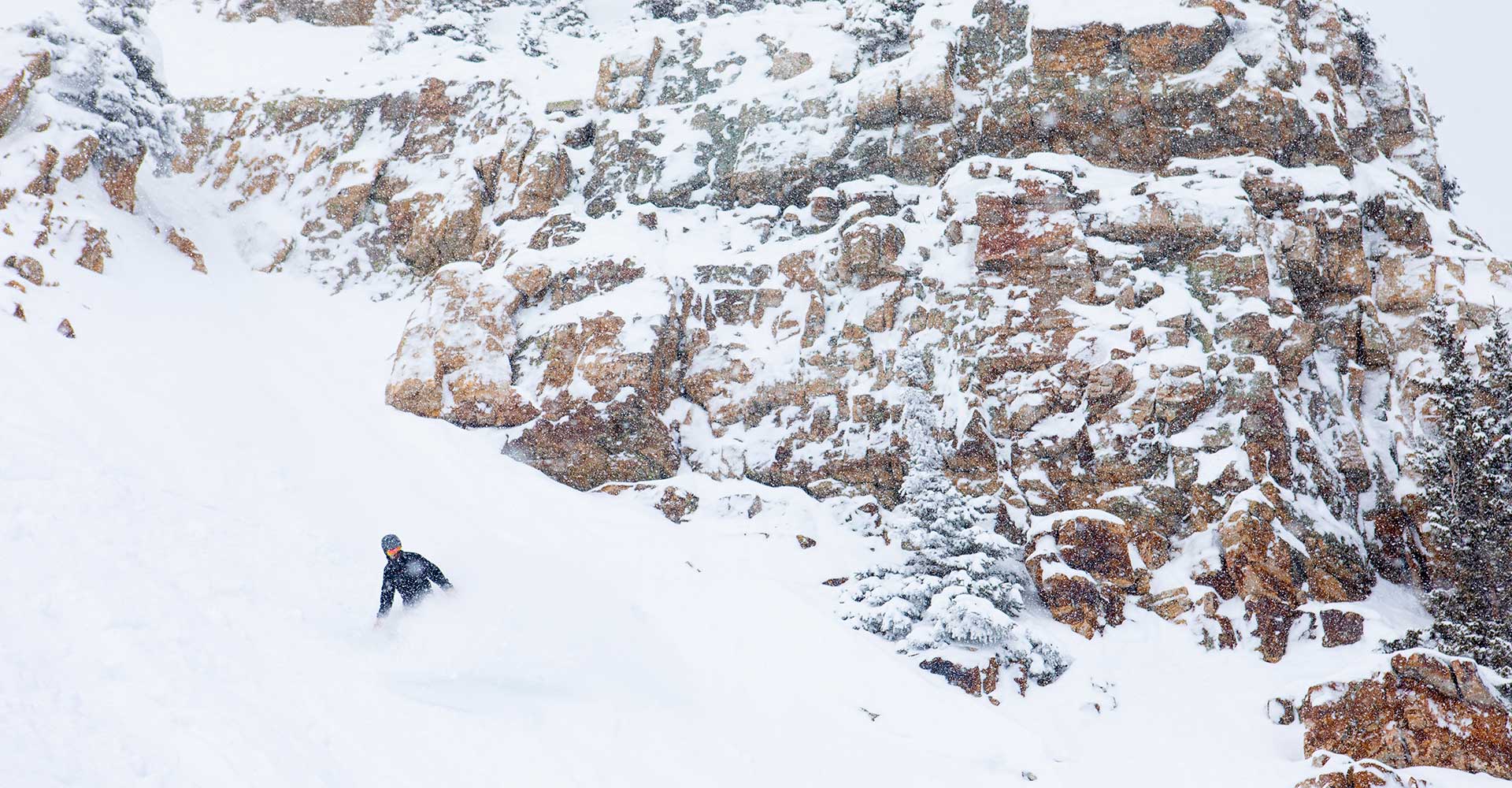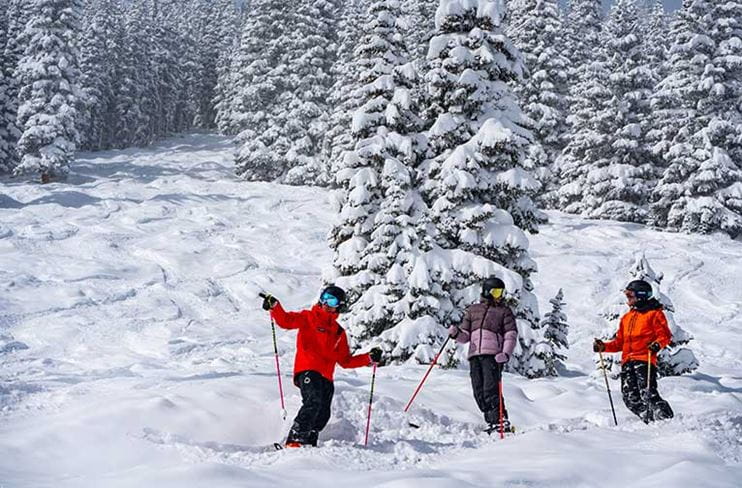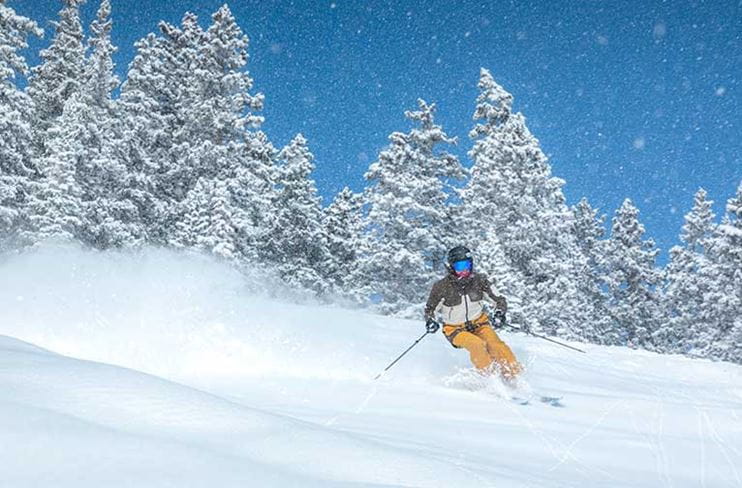
Snowboard Pro Tips for Riding at Every Level
We tapped the best snowboard Pros in the business to give you a leg up on the slopes.
Beginners to a sport benefit from teaching, but you don’t have to be a beginner to learn something new. In snowboarding, learning at every level unlocks opportunities and the freedom and joy that comes with progression.
“Snowboarding is an expression, not a mode of transportation,” says snowboard Pro Shayna Yellon. “Sometimes it takes a couple days to learn to move the way the snowboard wants you to move. But once you unlock that, it’s unbelievable where you can go. And that’s where your fun begins.”
Yellon and fellow Pro Justin Devita, who in addition to teaching are also instructor trainers with the Ski and Snowboard Schools of Aspen Snowmass, offer tips for snowboarding at every level.

Snowboard Pro guides his students on proper boarding techniques
Green-Level Tips
Gear Up Right
Dress the Part
Frame Your Mind
Prepare Your Body
Make Your Move
Slide Right
Eyes on the Prize
Turn the Corner

Snowboard Pro leads his group down groomer at Aspen Snowmass
Blue-Level Tips
All Downhill From Here
Carve It Up
Get Technical
Speed Control
Jump Start
Be Body Aware
Steady Does It

Two advanced snowboarders carve turns through Snowmass' famed glades.
Black-Level Tips
Moving On
Experiment with Equipment
In the Park
Halfpipe Action
Powderhound
Mogul Mania
Forest for the Trees

An expert snowboarder navigates the steeps at Snowmass.
Double Black-Level Tips
Plan, Plan, Plan
Huck It
Explore
Whether you’re new to snow or a lifelong skier or rider, our Ski & Snowboard Pros aren’t just some of the best instructors in the business, they’re also your expert guides, helping you harness and hone your skills while showing you everything our four mountains have to offer. Secure the best price and lock in your preferred dates when you purchase your group or private lessons seven days ahead of time, all season long.

